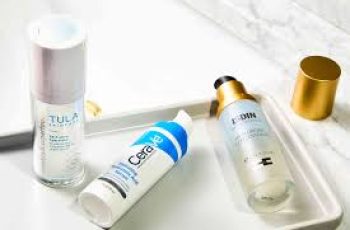
Squalene vs. Squalane: What You Need to Know About This Moisturizing Powerhouse
In the world of skincare, there’s often a lot of buzz around trending ingredients. Some of these ingredients come and go, while others hold up under scrutiny and actually live up to the hype.
Squalene is one of those ingredients that dermatologists consistently recommend for its impressive moisturizing benefits.
But here’s where things can get a little confusing: squalene and squalane are often used interchangeably, though they are slightly different.
So, what’s the difference? And why are dermatologists so fond of squalane? Let’s break it down.
What is Squalene?
Squalene is a naturally occurring substance produced by our own bodies. It’s a type of lipid (or fat) found in the skin, where it works to keep your skin hydrated and moisturized.
Your skin produces squalene through your sebaceous glands, and it plays an essential role in the health and appearance of your complexion.
Squalene helps your skin retain moisture, keeping it soft and smooth.
What is Squalane?
Squalane is the hydrogenated version of squalene. Squalene is unsaturated and can be unstable, which means it may oxidize (go bad) when exposed to air or sunlight.
Squalane, on the other hand, is a more stable, shelf-life-friendly version of squalene that retains its moisturizing benefits without oxidizing.
Because of its stability, squalane is the form that’s typically used in skincare products.
Why Do Dermatologists Love Squalane?
Board-certified dermatologists love squalane for several reasons. One of its most significant benefits is its ability to moisturize the skin without causing irritation.
Squalane is lightweight, non-comedogenic (won’t clog pores), and works well across various skin types — including sensitive, dry, and acne-prone skin.
Dr. Marisa Garshick, a board-certified dermatologist and clinical assistant professor at Cornell University, highlights that squalane not only hydrates the skin but also has anti-inflammatory properties.
This makes it particularly effective in reducing redness and soothing irritated skin.
Squalane in Skincare: How It Works
When used in skincare products, squalane helps to lock in moisture, making the skin feel soft, plump, and well-hydrated.
It also helps to restore the skin’s lipid barrier, which can be damaged by environmental stressors, sun exposure, or harsh skincare products.
In addition to its moisturizing power, squalane also has a calming effect on the skin. It can help alleviate irritation from conditions like eczema, rosacea, and acne.
It’s even safe for use during pregnancy, according to Dr. Garshick, making it a popular choice for expecting mothers.
Squalane vs. Squalene: Which One Is Better for Your Skin?
While both squalene and squalane are beneficial for the skin, squalane is the one you should look for when shopping for skincare products.
As Dr. Brendan Camp, a board-certified dermatologist, explains, squalane is more stable and doesn’t oxidize as easily as squalene, making it a more effective and durable ingredient in skincare formulations.
Most squalane used in beauty products is derived from plants such as olive trees, sugar cane, and rice bran.
It’s a great alternative to other heavier oils, like coconut oil, and works well for hydrating and smoothing the skin without feeling greasy or clogging pores.
Who Should Use Squalane?
Squalane is generally suitable for all skin types, including those with sensitive, dry, or oily skin.
It can help moisturize dry skin, calm inflammation, and even help balance oil production in acne-prone skin.
For people with oily skin, squalane is ideal because it offers hydration without leaving a heavy, greasy feel — which is often the case with richer oils like argan oil or coconut oil.
Dr. Garshick emphasizes that squalane is also a great option for those with sensitive skin or conditions like rosacea or eczema.
Its anti-inflammatory properties help reduce redness and soothe the skin.
That said, it’s always best to do a patch test when introducing new ingredients into your routine, particularly if you have sensitive skin or any existing skin conditions.
When to Use Squalane: Best Practices
Squalane is incredibly versatile, so you can use it in various parts of your skincare routine, depending on your needs. Here are a few ways you can incorporate squalane into your regimen:
Serums: Many hydrating serums feature squalane as a key ingredient to lock in moisture. These are often lightweight and can be layered under other treatments or moisturizers.
Moisturizers: Squalane is a common ingredient in facial moisturizers due to its ability to hydrate without being too heavy or greasy.
Essential Oils: Some essential oils are often combined with squalane to create a soothing, hydrating blend.
These can be great for calming and moisturizing the skin after exposure to harsh environmental factors.
After Retinol or Other Actives: If you use active ingredients like retinol (which can be drying or irritating), squalane is an excellent option to help soothe and moisturize the skin afterward.
The combination helps restore balance, keeping your skin hydrated while you reap the benefits of your active treatments.
During Pregnancy: For expecting mothers, squalane is one of the safe and effective moisturizing ingredients to incorporate into your skincare routine.
It’s gentle, non-irritating, and can help combat the skin dryness that often occurs during pregnancy.
Top Squalane Products for Hydration and Skin Health
If you’re ready to add squalane to your skincare routine, here are some dermatologist-approved products that are known for their quality and effectiveness:
Biossance Squalane + Vitamin C Rose Oil: A cult favorite among skincare enthusiasts, this oil combines squalane with brightening vitamin C to hydrate and even out skin tone.
The Ordinary 100% Plant-Derived Squalane: A budget-friendly option, this pure squalane oil hydrates and softens the skin, without any added fragrance or artificial ingredients.
Drunk Elephant Lala Retro Whipped Cream: This rich, whipped moisturizer is packed with squalane to provide deep hydration and improve the skin’s elasticity.
Tatcha The Dewy Skin Cream: Infused with squalane and other nourishing ingredients like Japanese purple rice and algae, this moisturizer provides dewy, smooth skin.
First Aid Beauty Ultra Repair Hydrating Serum: This hydrating serum combines squalane with colloidal oatmeal to soothe and hydrate the skin, making it a great option for sensitive and dry skin.
Pai Skincare Rosehip BioRegenerate Oil: A squalane-rich product that also incorporates rosehip oil, this nourishing oil hydrates while helping to improve skin texture and tone.
Squalane + Other Ingredients: What to Know
Squalane is often paired with other active ingredients to enhance its effects. For example, it works well with retinol.
Retinol is known for its ability to increase cell turnover and fight signs of aging, but it can also cause irritation and dryness.
Squalane helps counteract this by hydrating the skin and soothing the irritation caused by retinol.
This makes squalane an excellent choice for people looking to use stronger actives without compromising skin hydration.
Other ingredients that pair well with squalane include:
Hyaluronic Acid: Both hydrating and skin-plumping, hyaluronic acid and squalane together can provide intense moisture and improve skin texture.
Niacinamide: This anti-inflammatory ingredient helps with redness, and its soothing effects are enhanced by squalane.
Vitamin C: Often combined with squalane in serums or oils, Vitamin C helps brighten the skin while squalane provides hydration.
Key Takeaways: Squalene and Squalane for Healthy Skin
Squalane is a more stable, shelf-friendly version of squalene, making it the go-to ingredient in skincare products.
Squalane hydrates, smooths, and softens the skin, and is suitable for all skin types, including sensitive skin.
Squalane helps balance sebum production in oily and acne-prone skin while moisturizing dry skin without feeling greasy.
It’s non-irritating, safe to use during pregnancy, and pairs well with other active ingredients like retinol, hyaluronic acid, and niacinamide.
When shopping for squalane-containing products, look for moisturizers, serums, and oils that focus on hydration.
If you’re ready to take the plunge and introduce squalane into your skincare routine, you can expect to see softer, smoother, and better-hydrated skin with regular use.
As always, start slowly and patch test new products, particularly if you have sensitive skin or are introducing several new ingredients at once.


